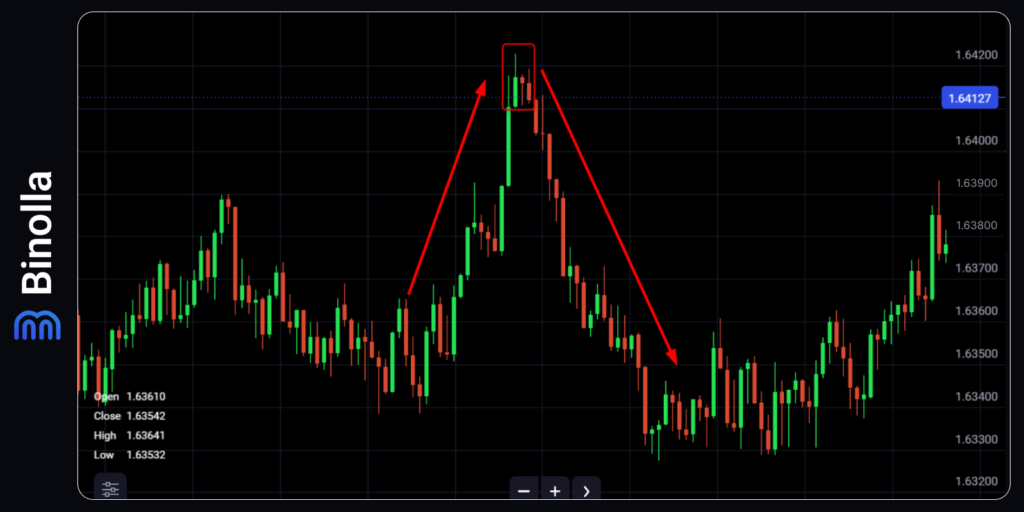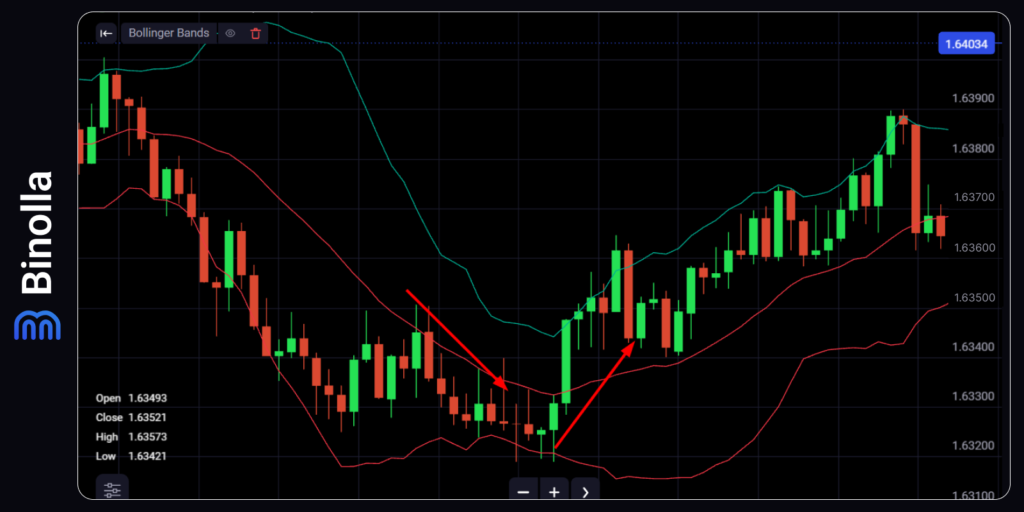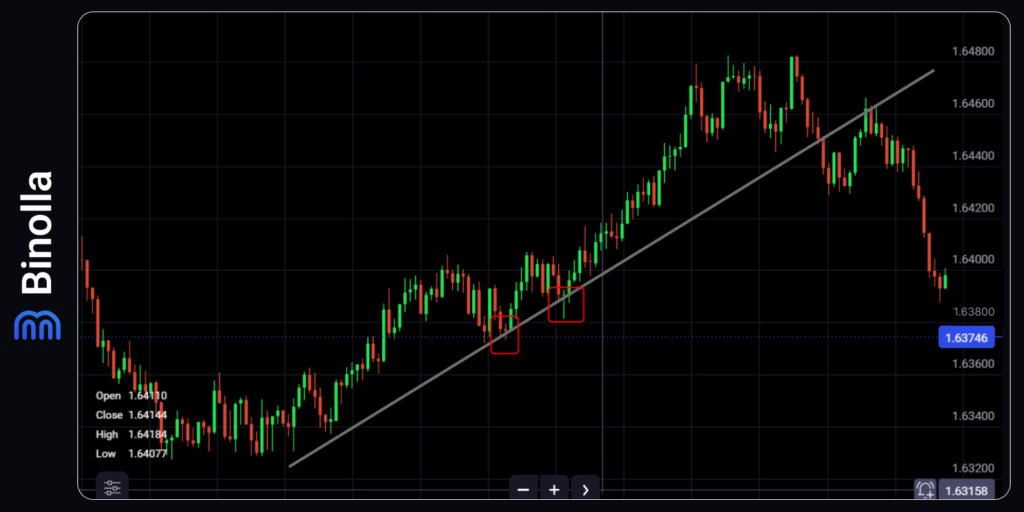Swing Trading vs. Day Trading: Which Strategy is Right for You?

There are plenty of strategies and trading styles that digital options and Forex traders can use in their trading sessions. In particular, one can apply a lot of reversal tactics that allow them to find entry points when the price of an asset reaches its extremes. Some strategies are designed to collect even higher profits during trends. In this article, we are going to compare day and swing trading and provide traders with abundant information about both styles. If you already have a working strategy, you can start trading at Binolla now.
Day Trading Basics
Day trading is a style where traders open a lot of trades throughout the day trying to capitalize on short price movements. Similar to other short-term trading approaches, day traders prefer higher volatility as it allows them to find more opportunities and receive substantial profits by the end of the day. Sometimes, day traders use news releases and various macroeconomic data as the volatility rises when such events occur.
One of the benefits of using this trading style is the possibility of avoiding additional overnight costs. However, such a method requires vigilance from market participants as there are risks of unpredictable market fluctuations and shifts. Therefore, effective risk management is vital for protecting a trader from excessive risks. Forex traders should use stop losses to cut losses they can not afford. Position sizing is also among the most popular ways to manage risks and money.
Contracts for Difference (CFDs) are used by intraday traders as they are flexible enough allowing market participants to make money on both buying and selling assets. Moreover, CFDs provide access to a variety of markets, contributing to diversification.
Digital options traders, in turn, use a lot of intraday strategies as they suit this type of contract. THey buy Higher and Lower contracts throughout the day. For digital options traders, day trading is the main trading style.
Day trading can be applied to any financial market, including Forex, stocks commodities, etc. Forex provides access to currency pairs with different volatility. However, those who trade should be mindful of additional costs, including spreads, that may decrease their eventual profits. Also, market participants should be aware of the concept of pips, which is essential for calculating profits and setting stop losses.
The Pros and Cons of Day Trading
Like any other trading style, day trading boasts both advantages and disadvantages. Grasping them will help market participants stay informed about whether day trading aligns with their goals and risk tolerance. Some of the key pros of trading within a day include:
- Higher gains. Intraday traders can rely on higher profits if they trade successfully. Market participants open a lot of trades throughout the day which can result in substantial gains;
- Quick profits. Day traders do not hold their positions for long. This allows them to realize their profits quickly. Moreover, they are not exposed to the risks of unpredictable overnight price changes;
- Higher liquidity. Traders using this style often buy and sell Forex, stocks, and commodities, which are assets with higher liquidity;
- Flexibility. Day trading is more flexible than any other trading style. Traders have a lot of options when to trade. They can use macroeconomic news or even avoid utilizing them in trading.
When it comes to drawbacks, they include:
- Higher risks. this trading style is risky due to a higher frequency of buying digital options contracts and rapid price movements. Traders, especially those buying and selling CFDs can experience significant losses if the price moves in the opposite direction;
- Constant monitoring. One should spend a lot of time monitoring quotes. This can be exhausting, especially for those having other duties to complete;
- Emotions. Traders will be pressed by various emotions. They should work in stressful environment that may lead to mistakes;
- Higher trading costs. For CFD traders, costs are of vital importance as they deal with spreads and other commissions. The more positions they open, the higher will be their costs.
Examples of Day Trading Strategies

The first day trading strategy is very popular and many digital options and Forex traders use it. It involves a reversal candlestick pattern, which appears at the top of the market. The hanging man that you can see in the chart allows traders to foresee the approaching market reversal, which is a great opportunity to buy a Lower contract or to sell a currency pair.

Another interesting day trading strategy allows traders to buy a Higher contract or to buy an asset (Forex currency pair, stock or any other) when the price bounces off the lower band of the Bollinger Bands indicator. This signal is augmented by a confluence as there is a hammer pattern at the bottom of the market.
As you can see, in both strategies a trader aims to profit from a single trade and from a single signal. Once it expires, the trade is closed.
Swing Trading Basics
When it comes to swing trading, the idea behind this approach is to open trades and hold them for a day, week, and even months along the main trend. This approach focuses on long-term perspective. Unlike intraday trading which is based on several quick buying and selling throughout the day, swing traders pay attention to mid-term market movements.
Those who use this approach often buy CFDs as they allow them to hold their positions for longer. However, digital option traders can also use various swing trading strategies. Traders analyze major trends and open trades when they see corrections. By adding to their existing positions, market participants can significantly boost their eventual profits.
Those who use swing trading strategies should think about overnight costs. While digital option traders don’t need to pay any commissions for their trades, those trading CFDs are charged various fees, including swaps. When buying or selling assets, a trader should calculate their costs to be able to better manage their funds.
Swing Trading and Digital Options
Swing trading is a very popular approach among those trading in traditional financial markets. It is based on buying/selling and holding positions along the major trend. When it comes to digital options, traders can’t use all the features of this method as their positions are limited in time.
Digital options have expiration. Most contracts are traded within seconds and minutes. While you can still add to your positions during the general trend, controlling your finances with such an approach may be difficult. Moreover, if you want to join a trend that may last for several weeks, your only way to do that is to add to positions after previous contracts have expired.
While digital option traders are unable to use those classic swing trading methods, they can still rely on strategies and buy various contracts during corrections joining the major trend.
Swing Trading Pros and Cons
Similar to other trading styles, swing trading has both its pros and cons. By understanding them, traders can see whether this approach suits their profit and risk expectations. The benefits of swing trading include:
- Traders can generate profits from trends. Those who utilizes this style can generate capitalize on larger trends and capture more substantial price movements as compared to day traders. By holding positions for weeks and even months, swing traders can benefit from the momentum and receive more money when they close all their trades;
- Less time required for monitoring. Another advantage of trading with this approach is that a trader spend less time on analyzing the market. Moreover, their trades are executed less frequently. This makes swing trading suitable for those who are limited in time or have other business to do;
- Reduced stress level. One of the greatest benefits of swing trading as compared to intraday trading is that traders work in a less stressful conditions. They have more time to analyze price movements and are not pressed to make quick decisions;
- Higher flexibility. Finally, market participants have more flexibility in terms of their current place and trading hours. You can have a better work-life balance when using swing trading strategies.
Some cons of swing trading approach include:
- Overnight risks. Leaving trades overnight may lead to both more substantial profits and higher risks of losses. Mid-term and long-term trading involves analyzing geopolitical and economic events. Moreover, price gaps are also possible that may also impact your trading results;
- Slower gains. With swing trading strategies, a trader will wait for more to receive substantial profits. This may not be an option for those traders looking for short-term gains;
- Volatility. This parameter may be good for a short-term traders, but those seeking to make profits on long-term movements may be unpleasantly surprised by sudden reversals;
- Emotional aspect. Those who hold their positions for weeks and months can be emotionally atteched to them, which, in turn, will lead to overholding. Traders may even break their plans to stay in the market.
An Example of a Swing Trading Strategy

Now, let’s have a look at an example of a swing strategy. We have an ascending trendline and the price touches it a couple of times during retracements. A trader can buy a currency pair or a stock there and hold their positions until the uptrend expires. This is the main idea. The more retracements can be found along the uptrend, the more positions can be opened and held. Sometimes, traders can open 5-6 trends along the trendline and hold them for a couple of weeks/months before getting substantial profits.
This example illustrates the difference between day trading and swing trading approaches. The first is a short-term method, while the second allows traders to stay in the market for longer.

The next example illustrates how swing trading can be used by a trader during the downtrend. There are several signals along the descending trendline that one can benefit from. In this particular example, a trader can accumulate several short positions and hold them until the downtrend is over. Again, this method is designed for a longer period.
Daytrading vs. Swing Trading: Which Style is Better for a Trader
If you are choosing between day trading and wing trading, you should consider a lot of factors. First, you should concentrate on your trading goals and psychological aspects. Intraday traders use strategies allowing them to catch even smaller price movements. This approach requires constant monitoring of the market and quick reaction.
With all the above in mind, a day trader should be stress-resistanct. If you choose day trading, you should also be prepared to spend a lot of time on analyzing quotes and choosing the best moment to enter the market. Moreover, with a higher number of positions that you open, risks of losses also increase.
Swing trading, in turn, seem to be a win-win approach for most traders as you don’t need to monitor the market all the time. You can open one trade and wait until the market creates another swing to add to your current investments. Swing traders work in less stressful conditions and they have more time to spend on other activities.
However, to generate substantial profits from daytrading, one is required to invest more. One or even a couple of positions that you open and hold for weeks and month won’t be life-changing for you. Therefore, a trader should deposit more funds in trading.
There is no general answer on which one trading style to choose. Everyone should weigh all the pros and cons of both to make a trading decision. To make the right choice, a trader can use a demo account and try to practice both approaches to see which one suits them the best.
FAQ

What is Day Trading?
Day trading is a trading style that is based on quick and frequent buying and selling various financial instruments throughout the day.
How does swing trading differ from day trading?
The different between swing trading and day trading lies in the speed of opening positions and the holding period.
What are the typical timeframes for holding positions in swing trading?
Swing traders typically hold their positions for weeks and months.
How frequently do day traders execute trades?
Day traders open a lot of positions within a single trading day. They capitalize on small price fluctuations.
What factors influence the decision-making process in day trading?
Traders focus on various technical factors, including volatility, patterns, indicators, etc. to make their trading decisions.
How do swing traders find entry and exit points?
The range of tools for swing traders is broader as together with technical analysis, they use macroeconomic indicators, political news, and others to find entry points.
Which risk management strategies can be used by intraday and swing traders?
Both types of traders use stop losses to protect their positions from excessive risks.






